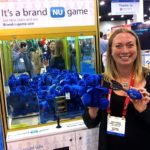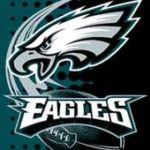This is the second part of my interview with Lisa Fawcett, VP of Global Marketing at CooperVision. Lisa went through an 18-month process that resulted in redefining CooperVisions promise, purpose, values, voice and ultimately their logo and packaging.
Drew: Where was your management in your rebranding process?
They were with us every step of the way. When you’re talking about a corporate brand it involves everybody. The team in manufacturing are just as vested in the company’s success as the R&D team and commercial team. This is about what the company stands for across the board – by function and region. This project was spearheaded at the highest level of the organization. It may have taken a bit longer given all the constituents, but by having all the groups involved it paved the way for success. You won’t have consensus but you will have input.
Drew: So how did you make the ultimate decisions?
There were two executive sponsors that were truly the final decision makers in the process. I think it was important to have this role as part of the process. The process allowed everyone to be heard and different ideas to be included, but in the end the final decision boiled down to 2 people; the president of CooperVision and the Executive Vice President of Commercial Strategy.
Drew: Where did competitive evaluation fit in?
As part of the research we included the competitive set. The contact lenses market has four truly global manufacturers, many of them speaking with the same voice. Customers think of CooperVision as a company that brings different ideas to the table, and is very approachable. What we realized was we were not verbalizing our uniqueness to the marketplace. We realized we were speaking just like everybody else, we were acting like everybody else, we were talking like everybody else. It was time to change.
Drew: So this must have been a big moment.
Absolutely. We are bringing to the forefront the things that globally we already get credit for and it is relevant to our practitioners and lens wearers. Our promise is ‘We bring a refreshing perspective that creates real advantages for customers and wearers’.
Drew: So how did you define your purpose?
Again, the purpose is different than our promise. The promise as I mentioned is how we differentiate ourselves in the market. The purpose had to be a rallying cry to employees, why we come to work each day. Our purpose is ‘we help improve the way people see each day’. We spent a significant amount of time with the Siegel+Gale team, the executive team and working with the employee base to get this right. The segment about ‘ the way people see each day’ is not just the literal aspect of seeing each day, it is also about perspective. We wanted something to be scalable no matter where you were in the organization. So this is to be taken very literal, ‘you bet, we make contact lenses, we help people see each day’. And the statement also holds a meaning on perspective in terms of ‘how’ you see each day. Even the ‘each day’ was an important aspect to the statement because it also ground us in the every day. It’s literally talking about every day coming to work and giving your best.
Drew: Interesting. It’s aspirational and down to earth at the same time.
That is what we like about it. It really does a nice job for employees of defining who we are – down to earth and aspirational. It ties to our promise –‘we bring a refreshing perspective that creates real advantages’, because within the company we are down to earth and aspirational too – it is how we can live up to our promise
Drew: Do you think your 7,000 employees could actually recite some aspect of the new brand?
Yes, actually it’s been quite fun. We just did an employee survey. And what was very cool is that people are aligned, they could repeat the brand promise, they could tell you the values, and they understood what we are doing as a company. And not only could they repeat it, they were engaged. People are sending me their new hire forms that are highlighting the values of the organization, their meeting minutes that indicate they are talking about the brand promise. It has been thrilling to watch it take hold so quickly. The other day, I was talking with a senior manager from our distribution center. They were interviewing people and they had two really good candidates. As part of the decision making process he asked, which one of these candidates best reflects the company’s values – that is how he made the decision. Impressive.
Drew: So where do changes of your visual identity fit into all of this?
If you do all the foundation setting with the correct promise, values, voice, and purpose and no visual change, it can take a long time for people to begin to see a new brand has been created. Changing the visual identity after the foundation has been built becomes a catalyst to employees, customers and contact lens wearers that an updated company story is being told. One of our biggest touch points with eye care practitioners and contact lens wearers are the contact lens packages we ship to offices every single day all around the world. So updating our packaging is important to signal an updated story is being told. I’m happy to say, that by the end of this year all of our key brands will carry our new packaging.
Drew: Congratulations by the way. You must feel great about this.
Yes. This has been one of the more satisfying initiatives in my career. It was a great process that yielded great results.
Drew: So talk to me a bit about how you are tracking this over time?
As we chatted about, we are taking 3 items into account. Employee satisfaction, brand tracking and allocation of resources. I love the phrase the VP of Commercial Strategy echoed throughout this process. ‘Brands are built from the inside out’. Hence our big focus on employee engagement. I am happy to say we have received our first employee satisfaction survey and the results were outstanding. We have a highly dedicated group of people at CooperVision, and we are all now ‘marching to the same drum’. As it pertains to the brand equity tracker we are getting ready to field our first follow up survey since the launch of the brand. We know this will take some time to move the needle as brand scores don’t change overnight. Lastly we are including our brand promise in our long range strategic planning. The initiatives we are developing for the organization are ‘pushed up’ against the brand promise to make sure we are staying true to who we are as a company.
Drew: Have you seen any sort of tangible movements as a result of this brand transformation?
What I can tell you is, our share continues to grow. And in fact we hit the billion-dollar mark, which was a cause for celebration. As I mentioned at the beginning of the interview, we didn’t embark on this journey because we had a problem, we were and are a growing company. Updating the brand ensures we continue to be relevant and credible to our customers and lens wearers so we can continue to see that growth in the future.
Drew: So what are the key lessons here?
First and foremost, do your homework with all your constituents. Get a good understanding of what the company’s perception is in the marketplace as well as the perception of the competitors.
Second, if you want the entire organization to embrace it, you have to involve the organization. They need to feel vested in the approach. Lastly, you will need a senior executive on the team as the final decision-maker. If you have those aspects of the initiative outlined then it will set you up for success.
Drew: Any other words of advice for marketers about to begin a rebranding journey?
You have to be open, you have to listen to everybody’s opinion. People need to feel like they’ve been heard. You also have to be comfortable people will not be happy as everyone’s feedback will not be implemented. Finally, have a strong partner in the process, for us it was Siegel & Gale. They need to be able to ‘push back’ on you, especially in terms of the end deliverable. It is their job to help keep you on track. It won’t be easy but it will be rewarding.
NOTE: You can find the article that this interview spawned on FastCompany.com.
 4. Have some fun
4. Have some fun